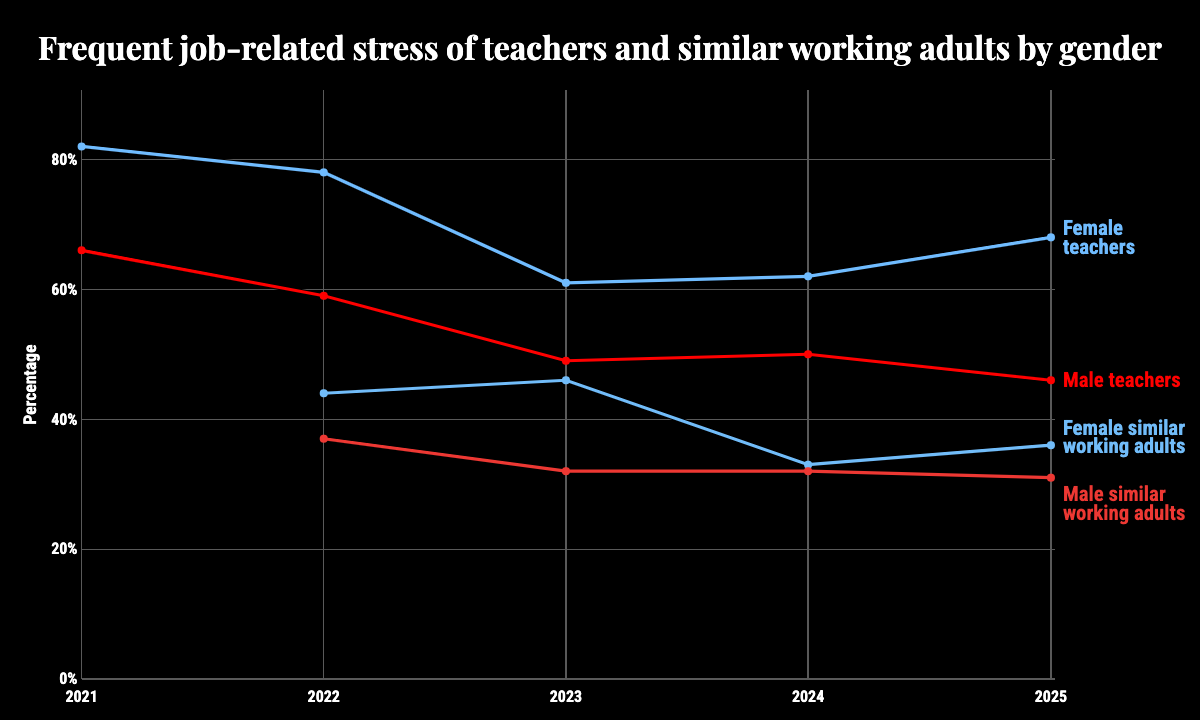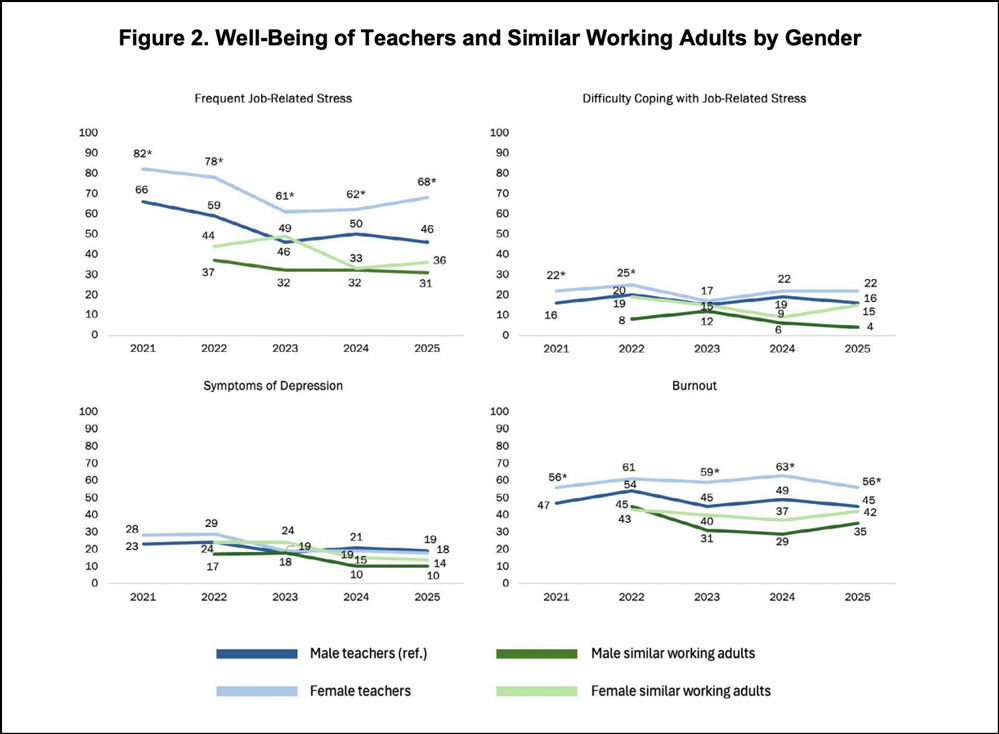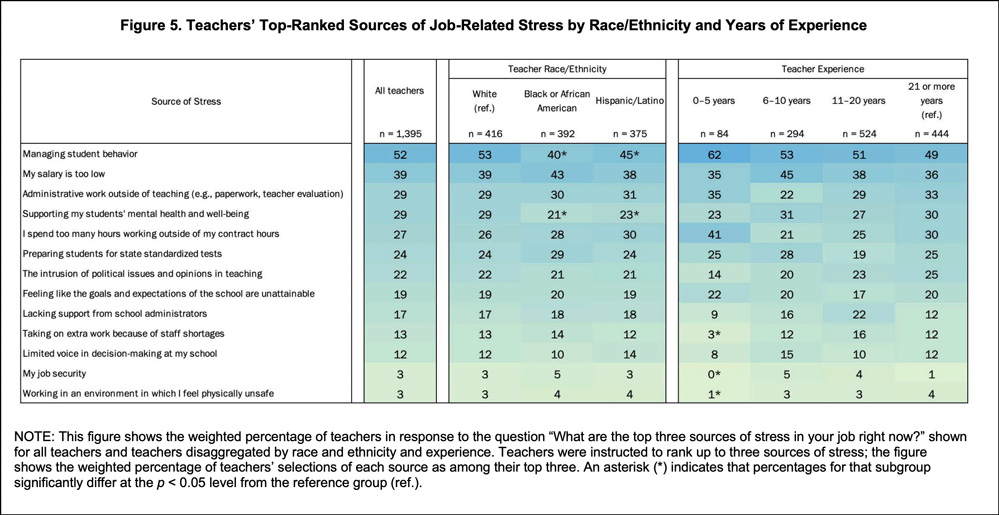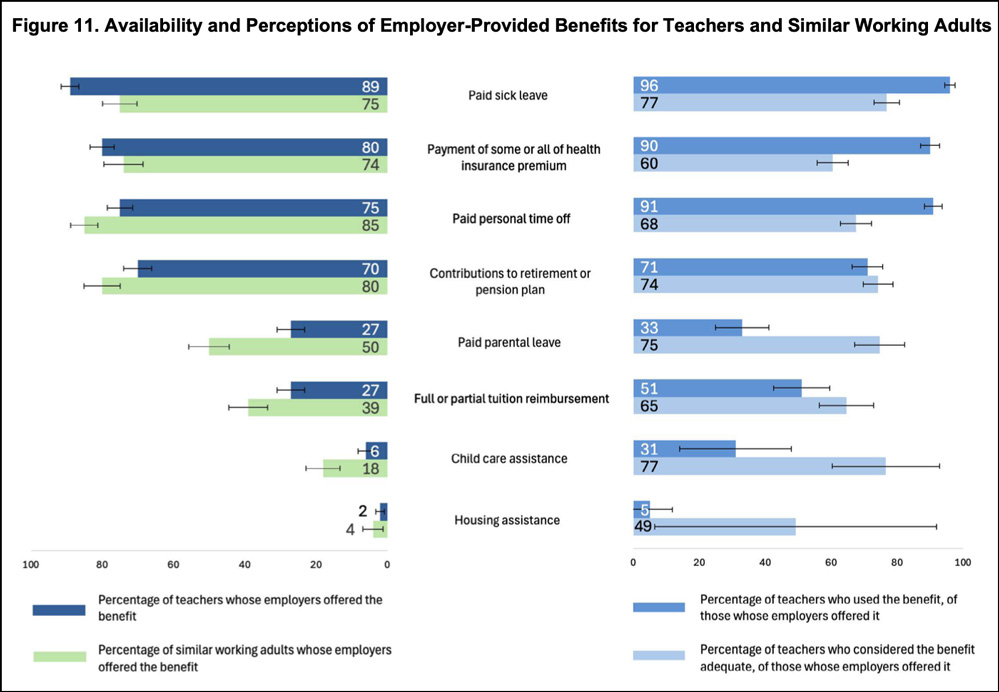New Study: Female Teachers Much More Stressed, Burned Out Than Male Colleagues
But fewer educators overall are looking to quit — and researchers see signs teacher well-being may be stabilizing after the pandemic.

Get stories like this delivered straight to your inbox. Sign up for The 74 Newsletter
Female teachers across the United States are significantly more likely to experience frequent job-related stress and burnout than male educators, according to new survey results.
The RAND study found a 22-point difference in stress levels and a 6-point difference in the degree of burnout — gender disparities that have held constant since at least 2021. Female teachers are also almost twice as likely as similarly educated women in other professions to report frequent stress.
These trends are worrying not just for teachers, but also for students, said Elizabeth Steiner, senior policy researcher at RAND and the lead author of the report.

“Teacher well-being is … really important because it is related to how well teachers are able to do their jobs, which is related to how well students learn,” she said.
“Having a teacher who is present and engaged and putting forth their full effort to help the students they teach could make a real difference,” Steiner added, “as opposed to a teacher who is less engaged or struggling with mental health, or poor well-being, or poor work-life balance.”
Steiner said she is particularly concerned about female teachers, especially because they make up about three-quarters of the workforce. A RAND report this fall will explore which factors may be driving the disproportionate levels of stress.

Overall, 62% of teachers surveyed reported frequent job-related stress this year, up 3 percentage points from last year but down from the record high of 78% in 2021. Still, they were almost twice as likely as similar working adults to report persistent stress. Teacher burnout levels dropped over the past year, from 60% to 53%, yet remain 14 points higher than levels reported by their non-educator peers.
Black teachers were more likely than their white peers to report burnout (59% versus 53%), symptoms of depression (25% versus 18%) and an intention to quit (28% versus 14%). Notably, they were less likely to report frequent job-related stress, a discrepancy that Steiner called “a puzzle.”
The findings, published June 24, come from the fifth annual State of the American Teacher Survey, which looks at well-being and retention for K-12 public school teachers. Researchers focused on sources of job-related stress, pay, hours worked and intention to leave. This year’s sample consisted of 1,419 teachers.
Becky Pringle, president of the National Education Association, the country’s largest teachers union, said she is “not surprised at all by these findings.” The “chaos and confusion” of the current political moment, she said, has made being a teacher an even more stressful job.

“Meeting the needs of whole students,” she added, “has gotten increasingly more difficult.”
Despite reporting persistently high levels of stress, the share of teachers overall who said they intend to leave their jobs by the end of the school year fell 6 percentage points, from 22% in 2024 to 15% this year. Fewer teachers also reported feeling burnout this year (53% versus 60%). The relative consistency of responses since 2023 suggests teacher well-being may have stabilized since the pandemic, according to the report.
The most common source of job-related stress for teachers across the board was student behavior (52%), followed by salary (39%). Black teachers were less likely to attribute their stress to student behaviors but more likely to point to salary as a key factor.
This could be tied to their pay: Black teachers, on average, reported earning 6% less than white teachers. Researchers think this could be, at least in part, driven by where teachers live and whether their states have collective bargaining units.

Teachers overall reported an average base salary of approximately $73,000 in 2025, a roughly 4% increase from 2024 but still significantly lower than the $103,000 average salary reported by similar working adults.
Just under half of teachers (46%) said they were better off financially than their parents, compared with 61% of similarly working adults.
Previous research has shown that while pay is a major contributing factor to teacher satisfaction, it is not the only one.
“If there are ways to look at the constellation of factors that include pay, administrator support, hours worked and a cornucopia of other working conditions that could help improve those things, that — based on what we found — seems like a solid recipe for improving retention and improving teacher engagement in their jobs,” Steiner said.
Hours and benefits also may play a role in overall stress and burnout levels: On average, teachers this year reported working 49 hours a week — four hours less than last year, but still 10 hours more than they’re paid to work, on average.
And while more teachers had paid sick leave and employer-funded health insurance than similar working adults, fewer reported receiving paid parental leave. Just over a quarter of teachers said they receive this benefit, versus about half of similarly working adults.

Heather Peske, president of the National Council on Teacher Quality, which recently documented the lack of paid parental leave, stressed its importance.
“It’s both a smart policy to recruit and keep good teachers, and it’s the right thing to do,” she said in an email.
Overall, Peske added, “Districts that offer teachers competitive benefits are better positioned to attract great teachers, reduce turnover and maintain the stable workforce that is essential for students to succeed.”
Get stories like these delivered straight to your inbox. Sign up for The 74 Newsletter

;)
